Tapestry lawns - everything you need to know about the latest lawn trend
Forget what you knew about lawns, there's a new wild trend taking them over this year

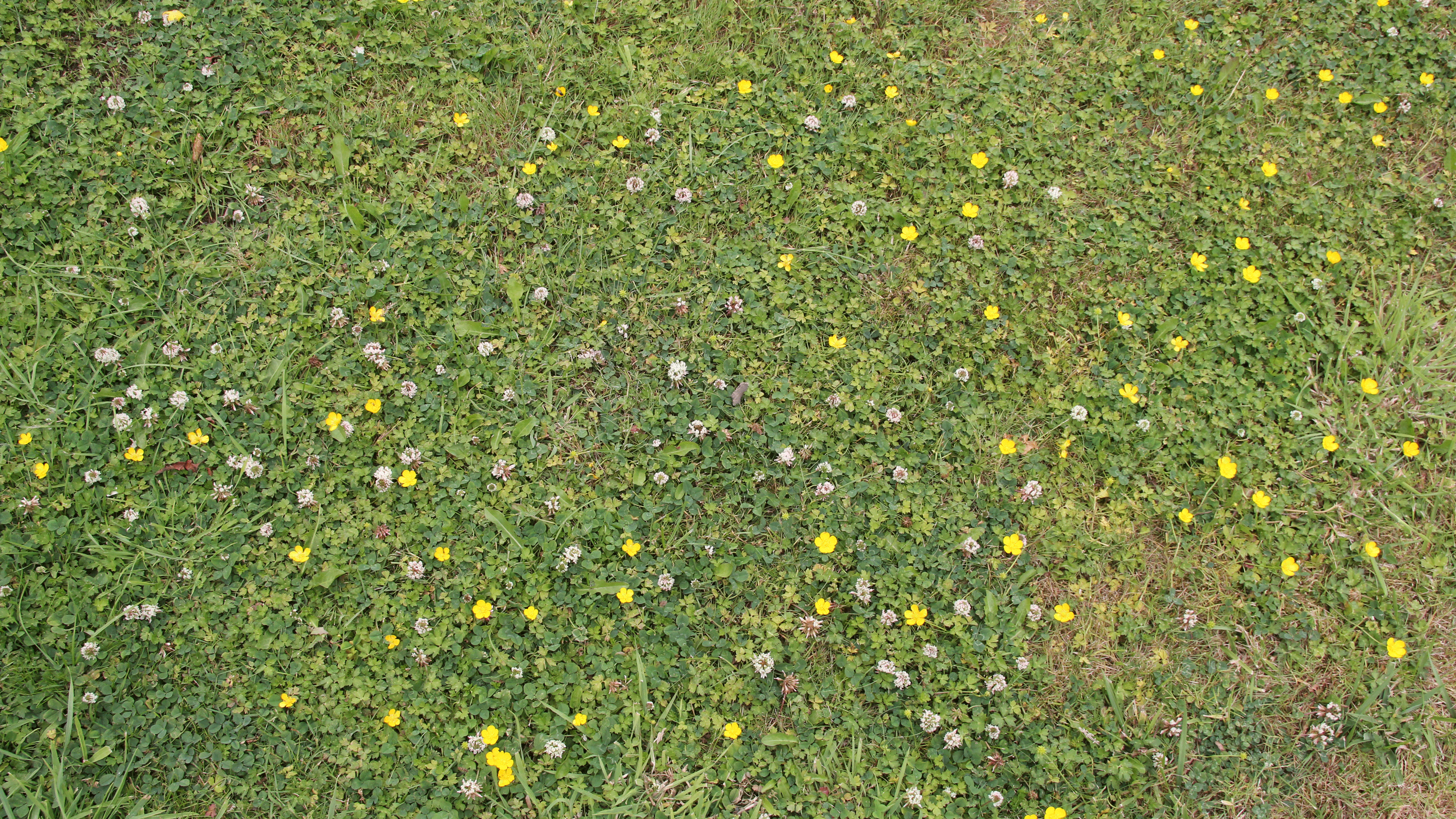
Everyone’s talking about turning over a traditional green lawn to a multi-coloured and pollinator-friendly tapestry lawn as one of the biggest garden trends this year.
Removing turf and replacing it with colourful, low-growing, hard-wearing drought-resistant plants such as sedum and white clover means less mowing, saving not just time but money on petrol and electricity too. A tapestry lawn also demands less watering than standard turf, which soon withers in hot, dry summer conditions.
The tapestry lawn trend is one of the best easy garden ideas. It won’t need aerating, and if moss forms in shadier patches, it will simply add another interesting texture to the overall appeal.
The dense planting of a tapestry lawn has other eco-benefits; it helps to keep immediate surroundings cool, but will also keep soil warmer when temperatures drop. And because this new type of lawn idea is textured, it helps to capture rainwater, so there’s less risk of storm-water run-off causing a damaging garden flood.
If you're keen to try out this emerging trend here’s our expert advice on everything you need to know about this exciting new garden trend.
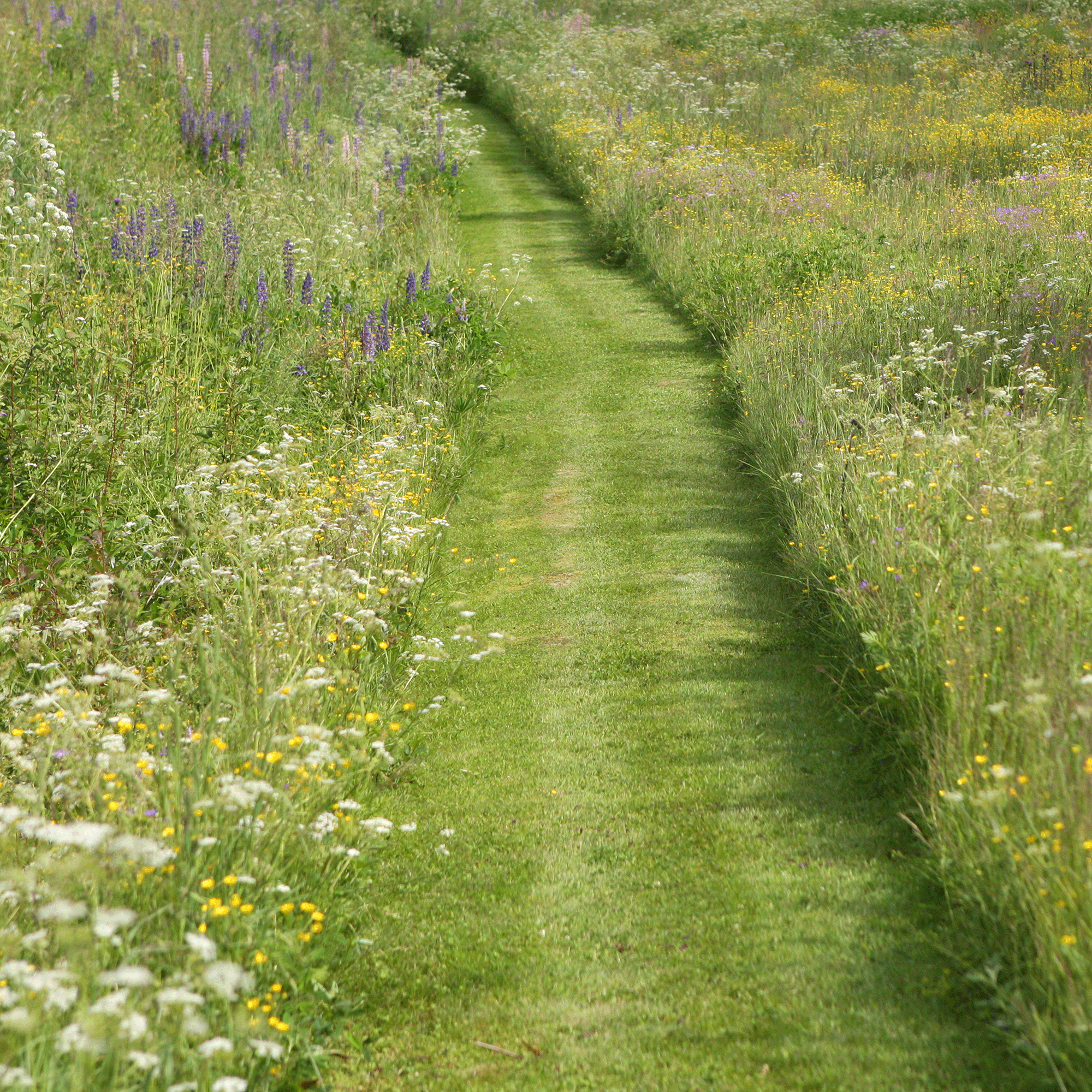
What is a tapestry lawn?
'The tapestry lawn, one of the latest garden trends, seems to have developed from the highly-popular wildflower lawns, both being eco-friendly and fairly low maintenance in comparison to a grass lawn,' says garden designer Pip Probert, co-owner of Outer Spaces
Think of a tapestry lawn as a mat of intertwined low-level plants which create ground cover. If you’re prepared to put in the maintenance work required, it’s possible to create a tapestry lawn with formal lines between each different plant species.
Sign up to our newsletter for style inspiration, real homes, project and garden advice and shopping know-how
However, most tapestry lawn designs are far more free-form, with plants entangling together to create an overall mass of shape, colour and form. So if you're wondering whether you need to do things like remove clover from your lawn, you could integrate these into your new tapestry scheme.
What are the benefits of adding a tapestry lawn?
'A tapestry lawn is great if you’re after something a bit different for your garden,' says Nick Wood, spokesperson for plant-sellers Gardening Express. 'It’s also perfect if you’re after something a little more low- maintenance.
'Tapestry lawns require less care than a traditional lawn. The mixture of different elements mean a tapestry lawn is more drought tolerant as it can adapt to the weather changes.'
The diverse habitat of a tapestry lawn brings enhanced benefits for wildlife, with big advantages such as shelter and food for all kinds of insects, including pollinators, and benefits for birds (which feed on the insects). If you have garden pond ideas or are close to water, a tapestry garden also provides a welcoming home for frogs and toads, with lots of natural nooks and crannies to hide under
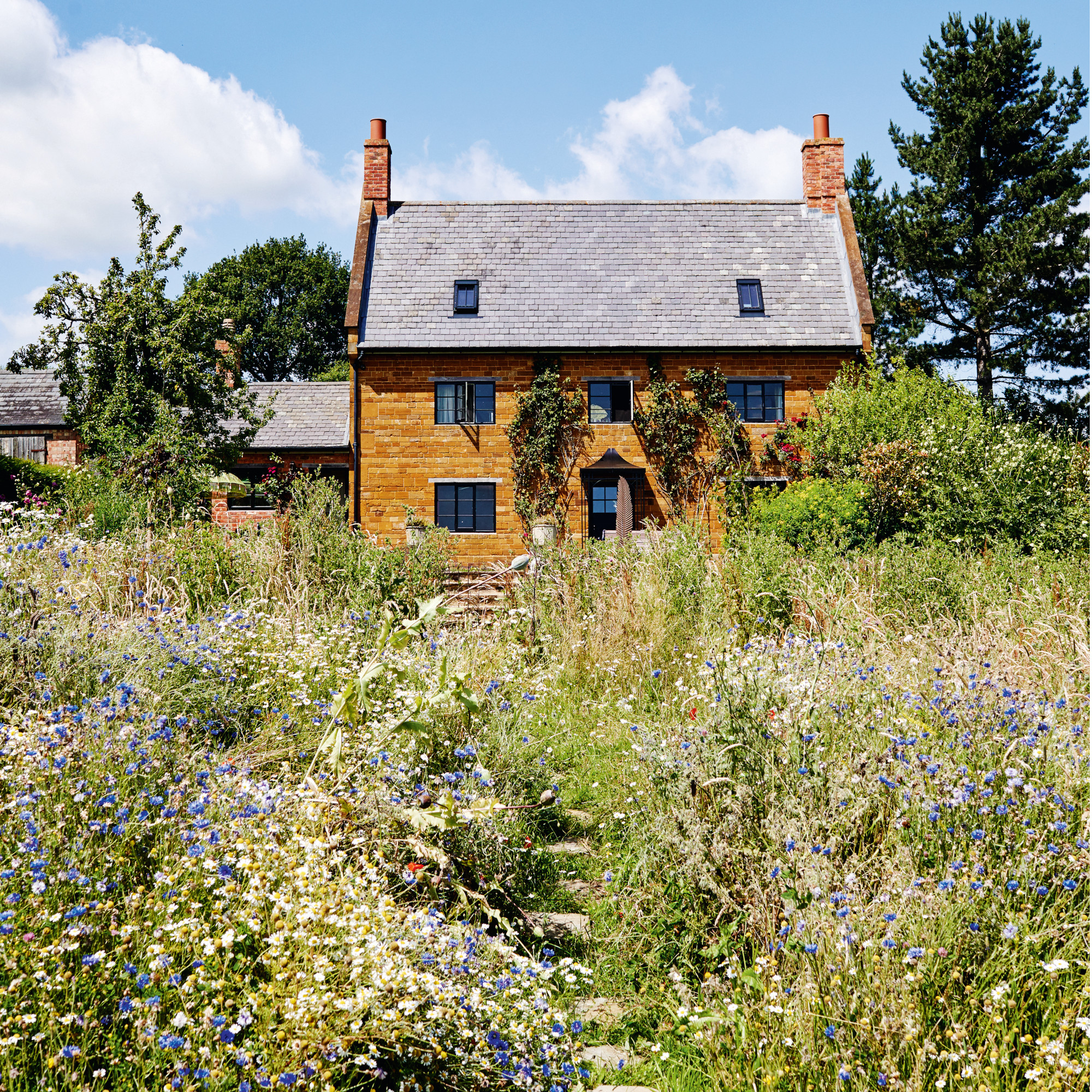
How do you get the look you want?
Like any planting plan, it is best to have an idea of the look you are trying to achieve with your new tapestry lawn before you begin. If this is part of a larger garden project, always factor in how much budget you have for plants – some may be rarer species hard to track down in neighbourhood garden centres and sold by specialist nurseries - and also consider any garden landscaping costs.
'When planning you should always start with the backbone plants, the reliable specimens that will thrive and remain solid all year long,' says Pip. 'Then you can start to work your way down the list with the more subtle options, colour highlights or more unusual items. There are various ‘backbone’ plants available to add colour, texture and flower interest, such as scuplutural lilyturf (Liriope), and bugleweed (Ajuga), with its bright blue flowers forming dense coverage.'
How do you turn an existing lawn into a tapestry lawn?
Converting your existing lawn into a tapestry lawn is a job you can do yourself, but if you’re unsure, you might want to find how much does a garden designer cost.
Here are the key steps, according to Pip:
- First remove all traces of the existing grass. You do not want large clumps of grass growing through your tapestry lawn at a taller height than your chosen plants.
- A turf cutter - you can hire one for the day - makes lifting a lawn much easier. Then dig any remaining roots or clumps out by hand.
- Use a rotavator to turn over the ground ready for planting your new tapestry lawn. This will allow you to pick out any remaining grass and weeds too, cutting down on the potential for self-seeding.
- Then you can add nutrients to prepare the exposed soil for the tapestry lawn plants. Do this with a layer of compost or enhanced topsoil.
- Before starting to plant, add some grit to the soil. Most plants suitable for tapestry lawns do better in coarse, free-draining soil.
- Follow planting instructions and try to plant in groups of three or five, this will help to create the most naturalistic look.
- Consider colours; theme your tapestry lawn as you would a border. You might opt for soft drifts of pastels, hot pinks, or deep rids and oranges, or go for a simple green and white scheme if the rest of your garden is especially busy.
- When placing plants, think carefully about how they will work next to each other. You should consider potential height and spread, and think about how to variegate different foliage.
Your new tapestry lawn will be thirsty at first as there will be a lot of plants in one area fighting for hydration.
'You will have to water regularly when first planted, if the weather is hot it may need water twice a day in the morning and evening,' says Angela Slater, horticultural expert at Hayes Garden World.
Is a tapestry lawn easy to maintain?
In general, a tapestry lawn is very easy to maintain. But be warned, starting a tapestry lawn from scratch can take time, and you should expect roughly a year for an established effect. During this period, you will need to remove any weeds that appear, so that they are not allowed to mature and spread.
A tapestry lawn can be mowed to keep it in shape. Use your mower on the highest setting; the general advice is to cut off only a third of the height of the plants at any one time, to encourage top growth and deep roots to form.
'Once you reach a level of maturity, this can ease and similar to a wildflower lawn,' says Pip. 'The tapestry lawn area can be mown two to four times a year.'
Use a slow-release fertiliser to gradually release nutrients to your tapestry lawn, applied at the recommended intervals. This will help seeds to germinate and encourage strong root formation.
However, Pip says that if you have younger children who like to play ball games, a large area of tapestry lawn might not be the best choice. Choose hardwearing turf instead. You can however, create a smaller patch or centrepiece of tapestry lawn if you want to experiment with the trend.
What are the best plants for a tapestry lawn?
Picking the correct plants for a tapestry lawn is very important, says Pip: 'Otherwise your finished product will be patchy or possibly take too long to knit – putting you off completely!'
She adds that tapestry lawns work best with low-growing flowering perennials needing little water, preferably native and not invasive; 'We want all the plants to grow and spread but equally, not with any one plant becoming dominant.'
You should also consider year-round interest. Scheme some autumn/winter colour plant into the mix.
Here are some recommended plant suggestions to consider for your tapestry lawn:
Acaena inermis

Very low-growing, producing flat carpets of tiny, rose-like purple leaves and small rounded clusters of white flowers. It thrives in full sun. Can be invasive, so requires care.
Achillea

Comes in a gorgeous range of soft shades such as peach, lemon and terracotta, with long-lasting flowers providing colour into autumn. Choose a low-growing variety and plant in full sun. Moderate growth so shouldn’t overtake other plants.
Bellis perennis, common daisy

Plant either the common daisy with its familiar white and yellow flowers, or a cultivar with bell-shaped blooms in deep or soft pink, for spring and early summer colour. Daisies like full sun or partial shade and although wild versions are prolific, won’t stifle other plants.
Bugleweed (also called ajuga)

Cobalt blue flowers in early spring. Bugleweed spreads by runners. This makes it easy to propagate but it will need keeping under control. It likes cool conditions in damp soil, tolerating light, dappled shade
Chamomile
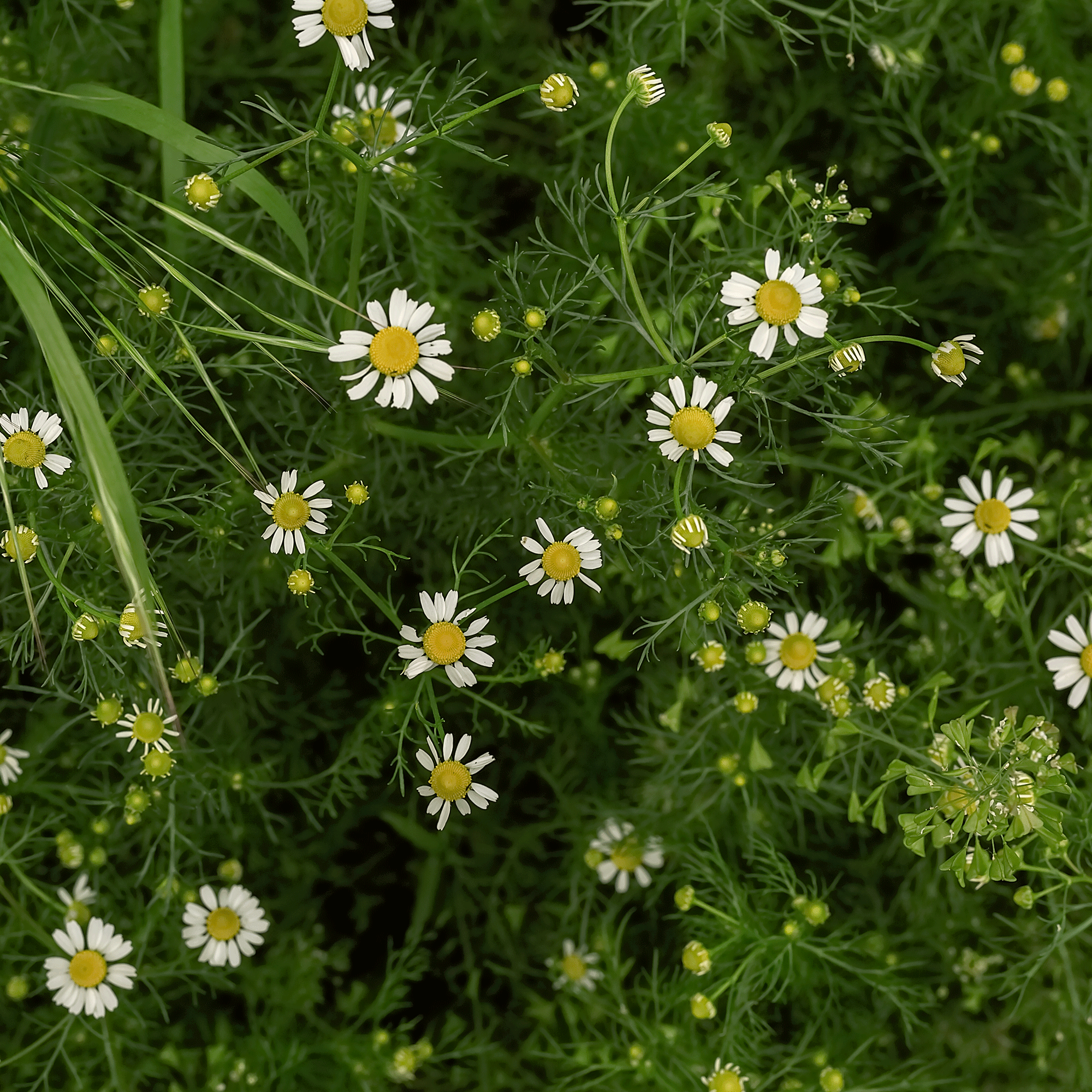
A classic ground cover plant used for centuries in place of turf. Yellow and white flowers form impressive mats on light, well-drained soil in full sun. To encourage compact, dense growth, trim regularly.
Creeping Jenny
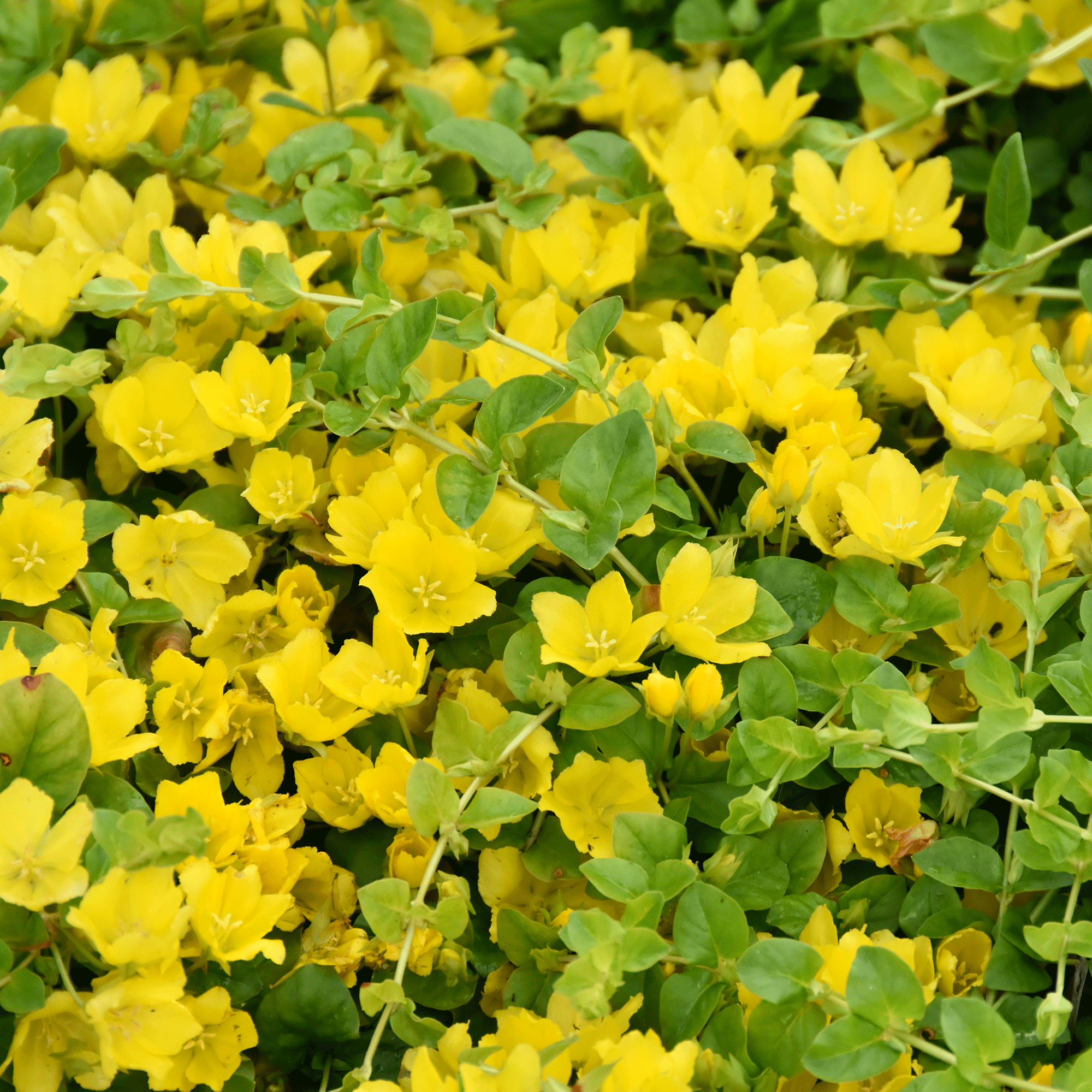
In its perfect spot, full sun and damp, even boggy soil, this evergreen perennial will take over, so be aware. However, its sharp green foliage and gold cup-shape flowers would be a good choice for a larger tapestry lawn.
Creeping mint
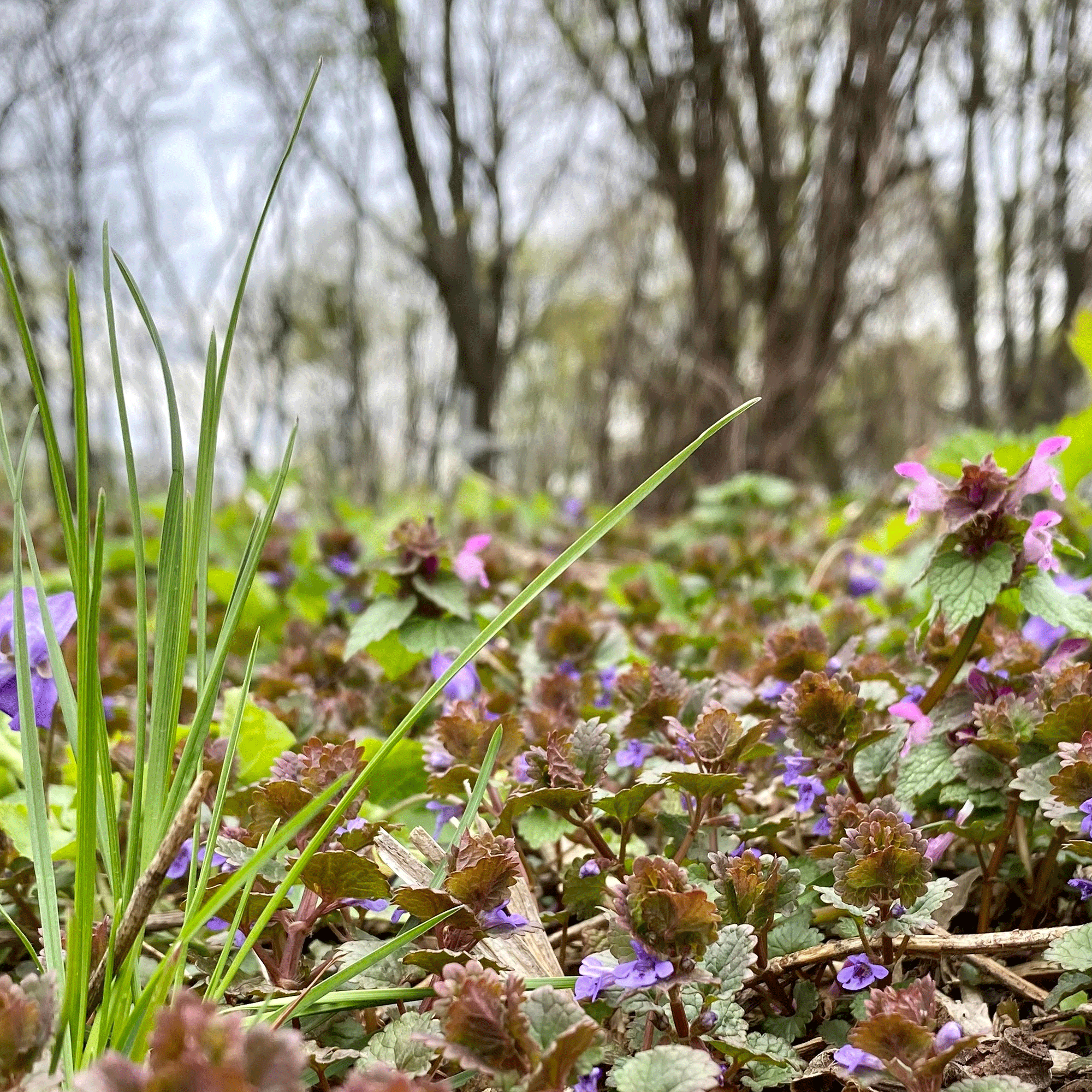
There’s a Mediterranean feel to this clump forming green-leaved carpet plant. It likes well-drained soil and a fairly sunny site to thrive, and will release a strong minty fragrance when walked on. Small pink flowers appear in the summer.
Leptinella dioica/squalida
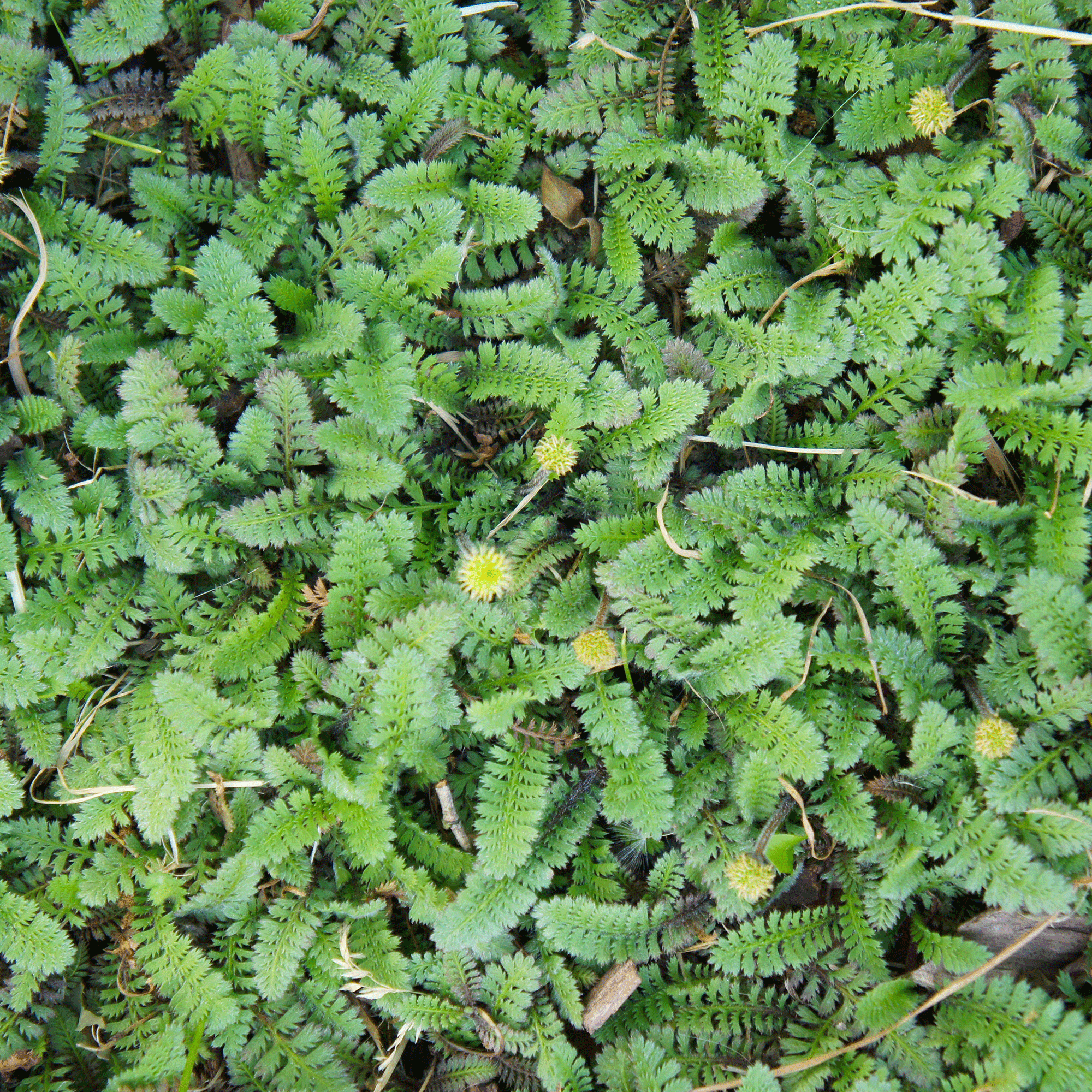
Either annual or perennial, this unusual fern-like plant (usually in black or dark silvery grey) grows low and is often aromatic, with tiny yellowish flowers. It likes well-drained soil, but not too dry.
Lobelia pedunculata (also called star creeper)
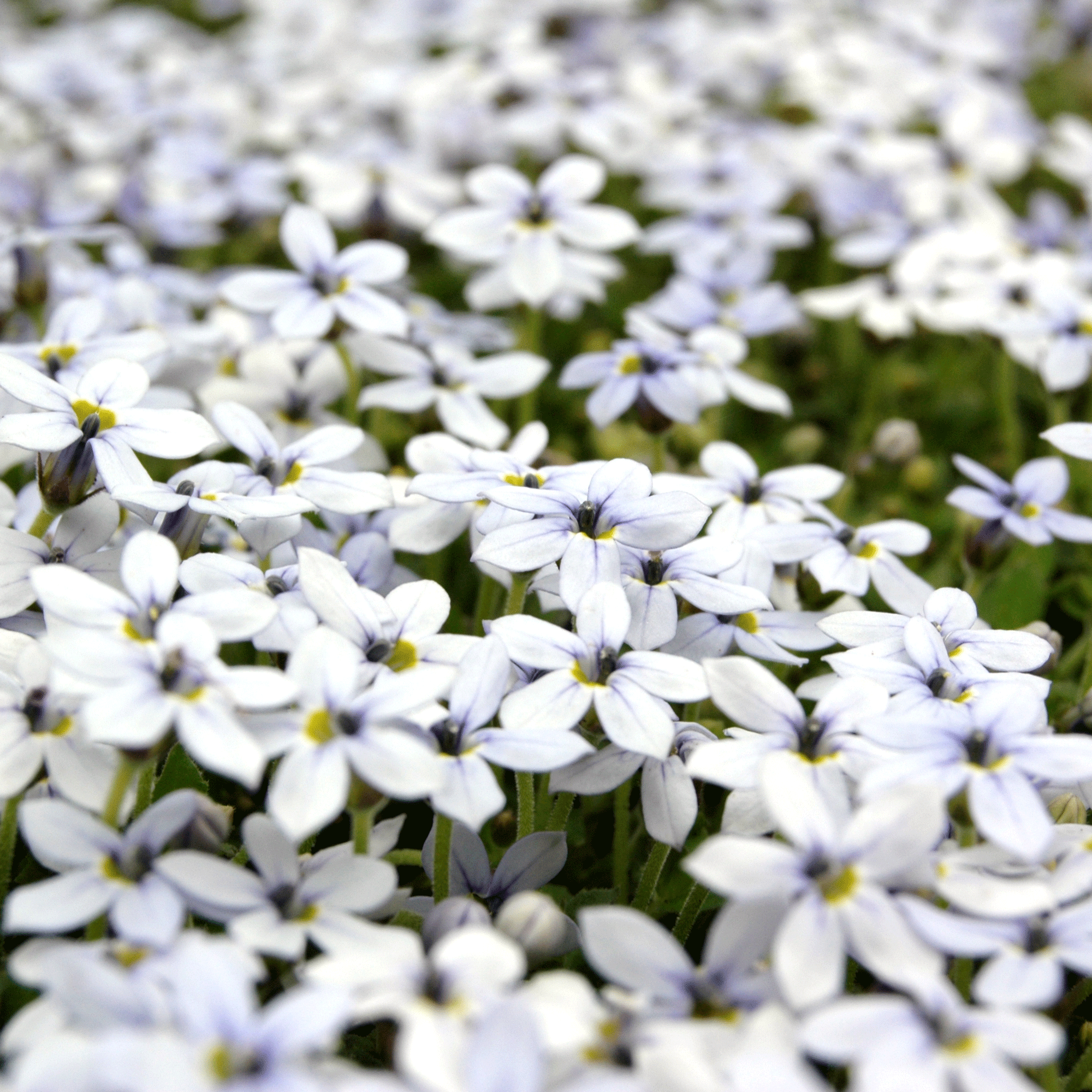
Low-growing, with masses of tiny pale blue star-like flowers, this is a very useful tapestry garden plant because it will thrive in shadier conditions. It’s also very easy to propagate; simply pull off a clump and plant.
Ranunculus repens (also called creeping buttercup)
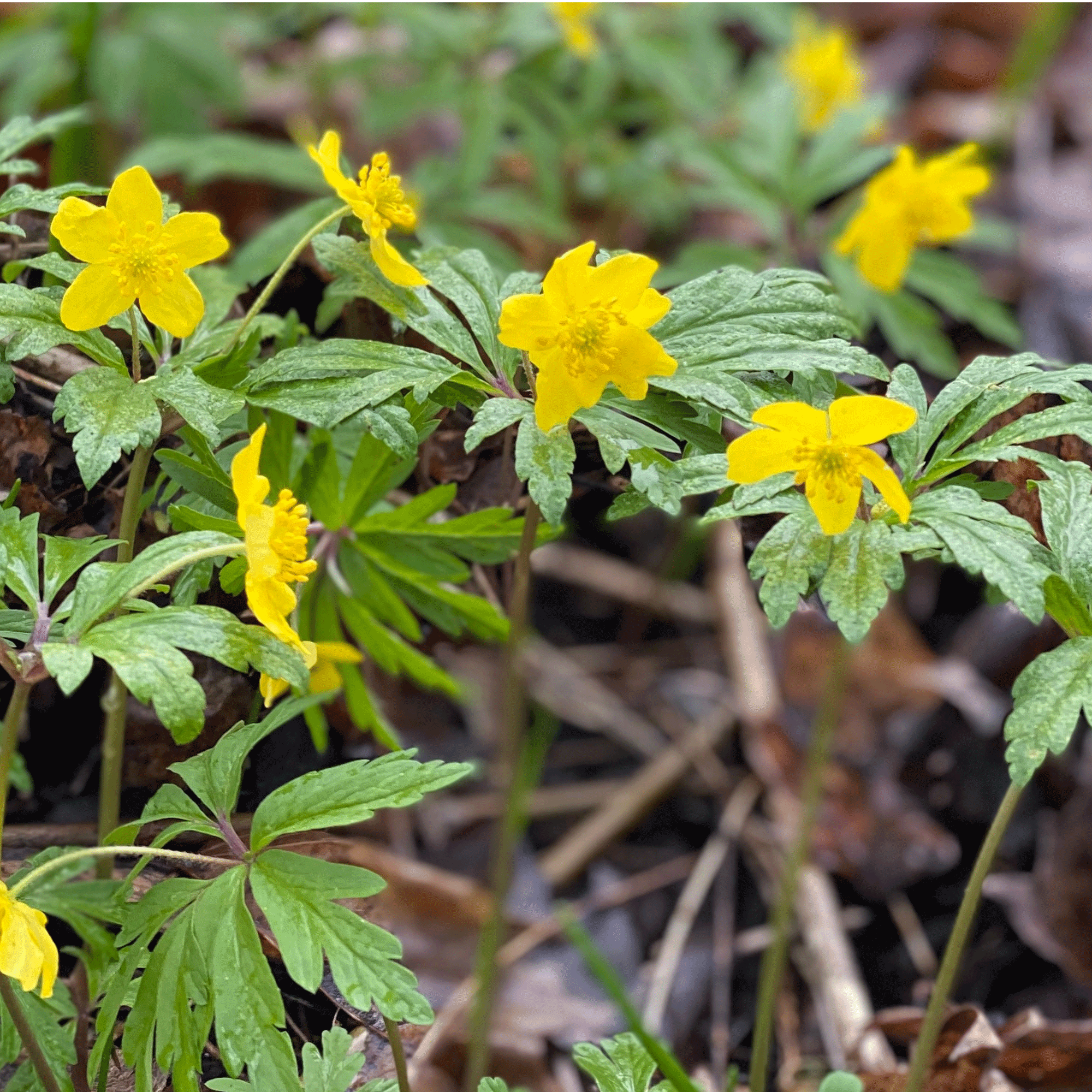
Like the daisy, the cheerful bright yellow buttercup is a native UK plant and found almost everywhere. It’s hardy – too hardy many gardeners say – and will spread quickly if not kept in check. The buttercup’s adaptability means it’s a good choice for damp, more shady gardens and bees love it.
Sedum (also called stonecrops)

Sedums are such hard-working plants and will thrive in hot, dry conditions. Avoid planting in damp patches of your tapestry lawn. Some sedums have small white, yellow, lilac or pink flowers. Their fleshy leaves look as if they won’t withstand the cold, but most are remarkably hardy.
Thyme

Choose a ‘creeping’ thyme which will grow quite slowly and bring forth long-lasting tiny mauve or pinkish flowers. Thyme has a signature scent, so if you’re planning to walk on your lawn, you’ll release it as you go. Loves well-drained sunny sites.
White clover

The pretty white flowers, appearing from May until October, are huge favourites of bees and other pollinators. It will grow on any open fairly well-drained site and with seeds spread by pollination and deep tap roots, can take hold. So treat with caution.
Veronica chamaedrys (also known as Germander speedwell)

Gorgeously delicate soft blue flowers on thin stems, from March to July, and a carpet-spreading habit, make this a pretty addition to a tapestry garden plan. Can be invasive.
Lilyturf (Liriope)

A visual cross between a grass and a salvia, liriopes have purple or white flower spikes, lasting until the autumn, and sharp shard-like leaves. They’re a fairly self-contained plant. Whilst adding shape and colour, tey won’t take over.
Can you walk on a tapestry lawn?
If you’re looking for new garden layout ideas and thinking of including a tapestry lawn, your biggest consideration is likely to be - can I walk on it?
'A tapestry lawn is not something you would regularly walk on, they would survive the occasional footfall but definitely not on a consistent basis,' says Angela. 'If there are children, maybe just sow a traditional lawn with a mixture of hard wearing grasses.'
If you want to walk on your tapestry lawn, avoid larger plants, and keep everything low-level, creating cushion-like foliage by selecting plants such as creeping thyme or chamomile, which will spring back.
One way to allow access across a tapestry lawn without damaging plants is to lay simple paving slabs across the area. Bed these on sand rather than concrete. This will allow water to permeate easily and you also move the slabs at a later date if you like.
Can you grow a tapestry lawn in shade?
If the area is almost totally in shade, a tapestry lawn wouldn’t thrive, and even the most resilient lawn turf would struggle. 'So maybe think of something else to cover the ground, such as weed-supressing gravel,' suggests Angela.
However, if the area is only partially-shaded or north-facing, look carefully at the tapestry lawn species you’re thinking of and choose varieties which don’t require especially sunny conditions.
If you really would like to try a tapestry lawn in a shady garden, you should trim and prune any trees and large shrubs casting shadows. Or even re-site sheds and outbuildings if these are the shady culprit.

Jayne Dowle is an award-winning freelance gardening, homes and property writer who writes about everything from swimming ponds to skyscraper apartments, for publications including Sunday Times Home, Times Bricks & Mortar, Grand Designs, House Beautiful and The Spectator. Awarded the Garden Journalist of the Year accolade at the Property Press Awards in 2021, she has a degree in English Language and Literature from the University of Oxford and a lifelong love of homes, interiors and gardens.